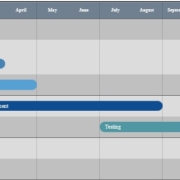Couchbase N1QL is a SQL-like language for JSON data. To retrieve and manipulate JSON data effectively, we need appropriate indexes. The rules for creating these indexes can be read here. But that involves too much reading, hence we now have an Index Advisor service that accepts a query and gives out an index recommendation that would meet the expectations of the Couchbase query engine — all without downloading the latest Couchbase server.
This service will provide index recommendations to help DBAs, developers, and architects optimize query performance and meet the SLAs.










